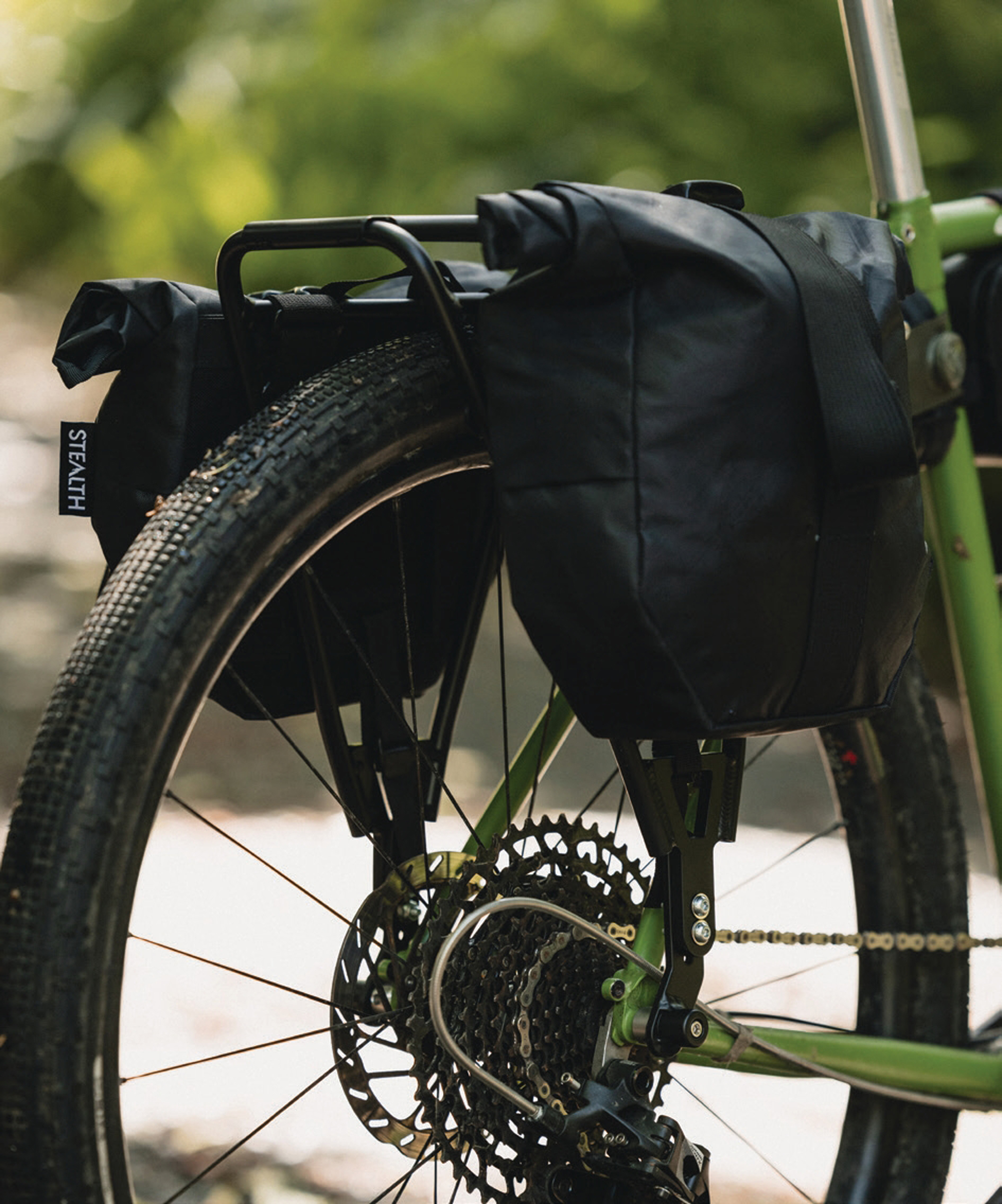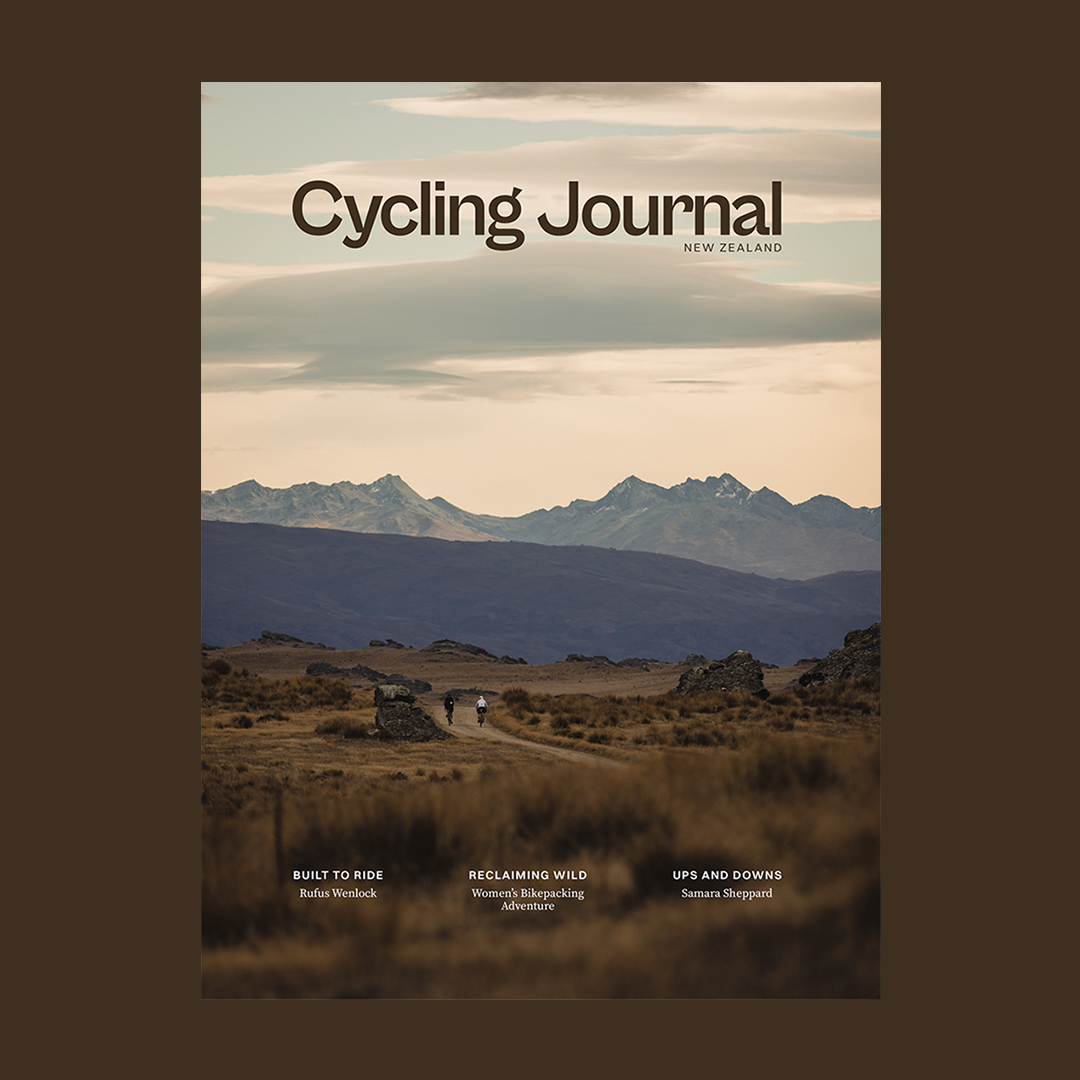Words Liam Friary
Images Cameron Mackenzie
RRP $289
Distributor Marleen
There’s an allure to exploring by bike for a few days, weeks, or even months. But, the first hurdle you must conquer is how to carry your stuff. These days, there’s a variety of bikepacking bags, but in years gone by – and even now – cycle tourers use racks and panniers.
There’s a strong argument for returning to them. They make for easy packing, offer more options for bags, tents and sleeping mats, and a rack system can be more robust across rugged terrain. While there’s a weight penalty, it’s possibly mitigated by the aforementioned benefits. However, not all bikes have rack eyelets to mount these rack systems onto. Old Man Mountain looks to address this issue with their Divide Rack, using a clever thru axle ‘Fit Kit’ mounting option. The versatile design works with standard rack eyelets if you have them, but can also be mounted to either a thru axle or QR skewer using parts from OMM (Old Man Mountain). Basically, the Divide Rack will fit any bike and is front and rear mountable.
Old Man Mountain (OMM) was born in California during the mid-90s. The founder, Channing Hammond, an avid mountain biker, designed a way to attach cargo racks to the centre of the wheel on a front suspension fork, for overnight mountain biking adventures in the mountains near Santa Barbara. He personally made all the racks back then. OMM has always been dedicated to making exploration racks for any bike. In the 90s, this meant Quick Release skewers. As thru-axles became more prominent, Hammond collaborated with the Robert Axle Project. The owners of Robert Axle Project – Chirs Kratsch and Katy Bryce – worked alongside Channing for many years. Eventually, Chris and Katy acquired OMM from Channing, seeing potential for greater market reach than he could achieve alone.
Installing my Divide rack went relatively smoothly, though it wasn’t particularly quick. I needed to consult an instructional video on YouTube, and appreciate that OMM has done an excellent job with their video and written content. Installation requires choosing the correct hardware from several included options, attaching the adjustable dropouts, and (for Fit Kits) assembling the axle with proper spacers and attaching the pucks and extenders.

The Divide mounting hardware includes short and long stays for preferred mounting options on frame or fork, accommodating various bike geometries. Adjustable extenders also tailor the height depending on your wheel size and rack placements. I opted to leave mine slightly higher for more tire clearance and improved stability. I used the rear thru-axle made by the Robert Axle Project, one of several solutions for bikes without sturdy rack mounts on their seatstays. This setup allows for significant load capacity – from 25kg to 31.75kg – applicable to both on and off-road use. Most of this weight is transferred through the axle. While I might not fully load it, the peace of mind is reassuring. I have other bikes with racks and am always concerned about excessive load on the eyelets or rack bosses. It’s worth noting that this rack comes with a lifetime warranty.
Out of the box, the rack feels heavy but extremely sturdy. It’s built tough and made to last – you can see and feel that it could withstand weeks of abuse. The main deck or platform is made of welded 6063 aluminum – 13mm diametre tubing, with a separate pannier rail which is 10mm in diameter. This pannier rail lowers the centre of gravity for your load, while the solid deck provides a very usable space to carry extra gear. There are numerous slots for straps and pre-drilled holes for light mounting. The sleek matte black finish keeps it understated.
In use, I packed up the Divide rack with a set of Mountain Panniers from Stealth. My adventure routes often include gravel roads, 4WD tracks, paper roads, mud ruts, river crossings – and everything in between. Knowing I have sturdy equipment is paramount to a good bikepacking experience. After a few days of back-to-back riding in the backcountry, the Divide rack performed well. I must admit the puck mounts on the seatstays initially made me a little nervous, but they remained securely in place for the entire trip. While I did feel the extra weight, the overall stability and lower pannier racks made for pleasurable riding.
Regarding weight, I’m happy to sacrifice some for robustness, usability, and greater storage. When compared to an ultra-light bikepacking setup, I think the use of a rack for extra gear and panniers makes life a bit easier when packing and unpacking. This is because you don’t have to stuff and roll the bikepacking bags to get them as small as possible. The versatility of a rack also makes sense if you use your bike for more than just bikepacking, such as commuting or doing shopping runs – you could even transport hefty supplies for your house, given the cargo-like weight capacity of the Divide rack.
The Old Man Mountain Divide rack stands out as a robust and versatile solution for bikepacking and beyond. While it may add some weight to your setup, the benefits in terms of stability, capacity, and ease of use make it a worthy investment for serious adventure cyclists. Its impressive load capacity of up to 31.75kg, coupled with the lifetime warranty, speaks to its durability and the manufacturer’s confidence in the product. Whether you’re tackling challenging backcountry trails, commuting, or running errands, the Divide rack’s adaptability is what makes it shine. The thoughtful design, including lower pannier rails and a solid deck, enhances both stability and usability. For those willing to prioritise functionality and reliability over ultralight setups, the OMM Divide rack proves to be a valuable addition to any adventure-ready bicycle.



